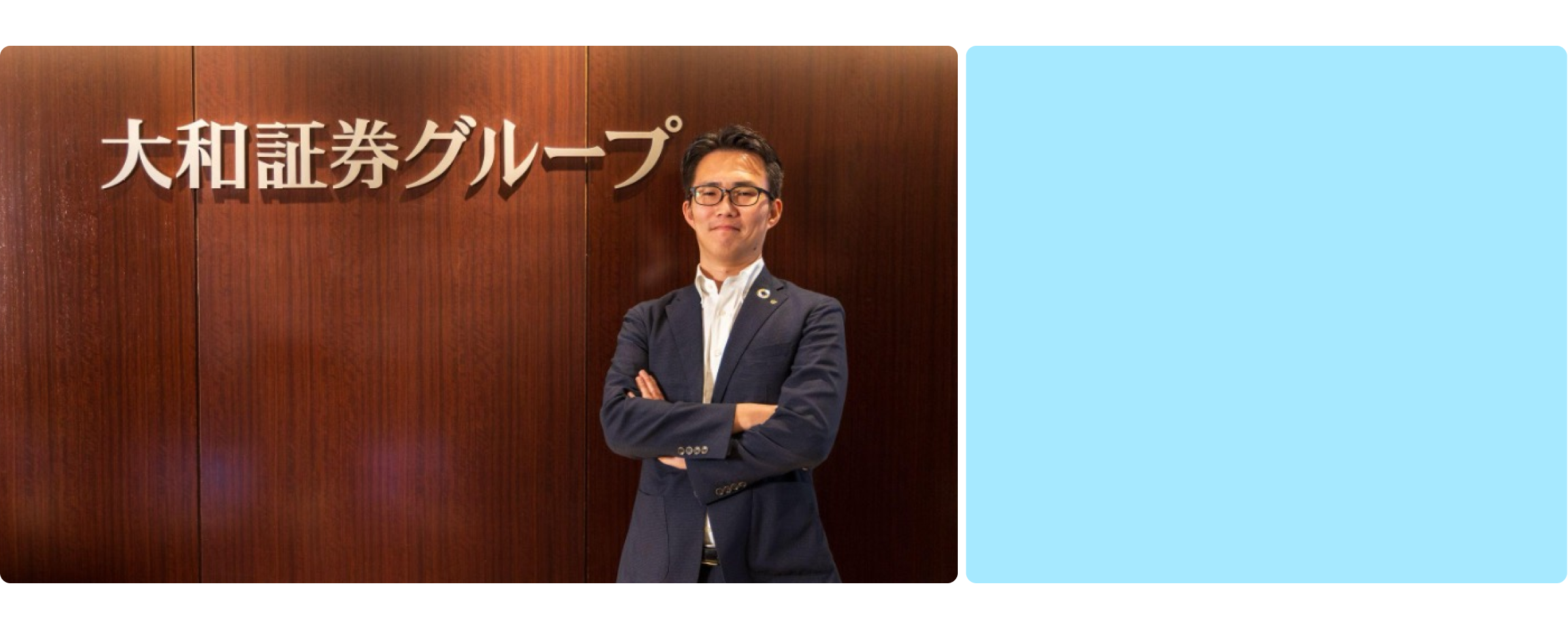Daiwa Securities Group and DeepL: the role of AI translation in digital transformation

In this post
- What you need to know about Daiwa Securities Group Inc.:
- Could you tell us about your company, department, position, and career to date?
- Since the launch of the Digital Promotion Department, how have the first few months been?
- What is the status of your company's transformation in the digital domain?
- Can you tell us about any technology or trend that is currently attracting your attention?
- You are deploying ChatGPT to 9,000 employees, but how are you integrating it into the operations of your employees?
- You also use DeepL’s AI translation tool. What were your internal needs that led you to adopt the product?
- With all the different translation tools available, could you tell us what made you choose DeepL?
- You’ve been using DeepL’s services mainly for file translation. Have there been any specific business impacts?
- What message would you like to share with companies considering DeepL?
What you need to know about Daiwa Securities Group Inc.:
- Japanese investment group Daiwa Securities uses DeepL’s AI translation to communicate with international audiences
- DeepL’s document translation is Hiroshima’s favorite feature, as well as the glossary
- DeepL has allowed Daiwa Securities to do more work in-house, saving on costs and reducing workloads
Headquartered in Tokyo, Japan, Daiwa Securities Group Inc. is one of the world’s largest securities brokerages. Offering a multitude of services, from online trading to asset management, Daiwa Securities Group boasts both corporate and institutional clients around the globe.
Recently, we sat down with Kazuki Hiroshima, to learn more about how Daiwa Securities is accelerating digitalization and leveraging DeepL’s AI translation to expand internationally.
Could you tell us about your company, department, position, and career to date?
Within Daiwa Securities Group Inc., I belong to the Digital Promotion Department, which was established in October of 2023. Created with a strong desire to accelerate digitalization, this department is under the direct supervision of the CEO.
Daiwa Securitie’s main areas of business are investment and financial services, with security at its core. Lately, we’ve been expanding our business not only in Japan but also in the Americas, Europe, Asia, and Oceania.
As for my own career, after having worked as a project manager at a foreign-owned IT company, I joined Daiwa Securities in 2016. During my previous career, I worked on projects with overseas stakeholders implementing and integrating systems in various countries, such as Europe, the U.S., and Asian countries. Because of this background, bringing Japan to the level of efficiency of such countries has become my mission and main area of research.
Thanks in part to my overseas experience, when I joined Daiwa Securities, I was involved in global regulatory projects. I’ve also been involved in the field of risk management, as well as corporate systems, such as human resources and finance.
Most recently, I’ve been involved in a wide range of advanced technologies and business reforms in digital transformation. Since October 2023, I have been a member of the Digital Promotion Department.

Since the launch of the Digital Promotion Department, how have the first few months been?
A few months have passed, and while some things feel the same as they did at the beginning, there are other aspects that feel different now. I had assumed that the Digital Transformation initiative was mainly about IT technology. But as I started this new role, I began to feel that the initiative was more of a push-back against existing culture and history.
Most IT technology originates in Silicon Valley and other cutting-edge places around the world. So, what we as Japanese companies need to do is to take the technology that has been created or is being created and apply it to our own operations.
In doing so, we need to consider which parts of our business we deliver impact for, how we deliver impact, and how we make decisions. This is where I feel we often face the barriers of the unique Japanese culture, for better or worse.
One of the characteristics of Japanese companies, in terms of employment, is a culture of collective hiring of new graduates and generalist training. There’s also a high degree of difficulty in adjusting the payroll. Thus, IT functions are often outsourced rather than done in-house.
There’s still a mindset of buying IT functions rather than creating them ourselves. I also sense that Japanese companies have a distinct way of thinking about quality. This is largely due to the fact that Japan's postwar recovery was centered on the manufacturing industry.
Japanese manufacturing has thrived thanks to a culture that places an overwhelming emphasis on the "Q" (quality) and "C" (cost) of QCD (Quality, Cost, Delivery). However, it doesn’t place much importance on speed of delivery.
That makes sense in manufacturing, since many things are related to safety. On the other hand, in software, the "D", or speed of delivery, is important. I think it’s necessary to increase the number of people who understand the importance of speed.
What is the status of your company's transformation in the digital domain?
Many employees feel that the world is moving toward digital technology and that it’s appropriate to move in this direction. This department has been set up with the support of the CEO and the management team.
Nevertheless, we are a regulated industry, and we’re not in a position to change anything for our own interests. We need to think about how we can use digital technology to be competitive within the scope of existing regulations and are constantly working to improve this issue.
Currently, we’re also making moves to focus on specific areas, for example, translation and speech-to-text. This is something we’re thinking about every day—looking at both the big picture and specific activities.

Can you tell us about any technology or trend that is currently attracting your attention?
Few IT and business companies can talk about technology without talking about generative AI. When I was in Silicon Valley last year, every IT company talked about generative AI—even if we didn't ask for it. I felt this was definitely the center of the technology trend.
In terms of how to use it, while we currently have generative AI as a core technology, the scope of its use is still limited with its current functionality. We’re working on how to utilize the functionality of generative AI as it continues to develop by linking it with our internal and external data as it grows.
You are deploying ChatGPT to 9,000 employees, but how are you integrating it into the operations of your employees?
We cannot say that all of them use it, but we have created an environment where they can use it. The reality is that some people use it frequently and others do not—depending on the nature of their work. About 10% of our employees use it at least once a day.
As an example, when planning a project, you can ask ChatGPT questions such as, "I want to take this kind of initiative, but what is the approach we should use?” I also asked, “what aspects should we consider to streamline our digital transformation work?” It gave me about five answers, including organizational structure and technology. I was impressed.
Also, since we are a financial institution, programming is done onsite. We use it for coding, and it works well. When we do data analysis, we give ChatGPT instructions like, "I want to cleanse the data, so write the code.”

You also use DeepL’s AI translation tool. What were your internal needs that led you to adopt the product?
Since our company is expanding internationally, we have a lot of communication with our overseas offices. Even within Japan, for example, there are wealthy Chinese customers, and the company has sales staff who deal with them. To communicate, we have to overcome language barriers.
There have been translation tools available to translate words and sentences, but with DeepL, I can translate whole document files. I find great value in that, as it’s led to a considerable increase in my own productivity.
With all the different translation tools available, could you tell us what made you choose DeepL?
There are two main reasons. The first (and most overwhelming) reason is the ability to translate on a file-by-file basis. The other is the glossary feature. In terms of being able to do both of those things, DeepL was the best choice we could find.
We also compare tool accuracy. It’s a qualitative point, but we often hear within the company: "DeepL is highly accurate and easy to use."
You’ve been using DeepL’s services mainly for file translation. Have there been any specific business impacts?
DeepL has directly contributed to improved productivity. For example, when we need to publish Investor Relations (IR) materials in both English and Japanese at the end of our business year, the effort to publish the English version has been reduced. As a result, speed has also increased.
After releasing IR materials, we need to post the Q&A sessions we had with investors and analysts on our website. We use DeepL to create Japanese and English versions simultaneously, which has helped speed up this workflow.
Before using DeepL, there were cases where we had to outsource the work to a contractor. The introduction of DeepL has enabled us to produce the work in-house, which, I heard, has reduced our workload, including costs.

What message would you like to share with companies considering DeepL?
The ability to translate files is by far the best and the translations are highly accurate. Also, the ability to set up glossaries is very practical. The future outlook is also very good, as DeepL is planning to expand into the audio domain.
If your company needs language support for its own global expansion, you can chat with our Sales team for more information on DeepL's AI translation solution.